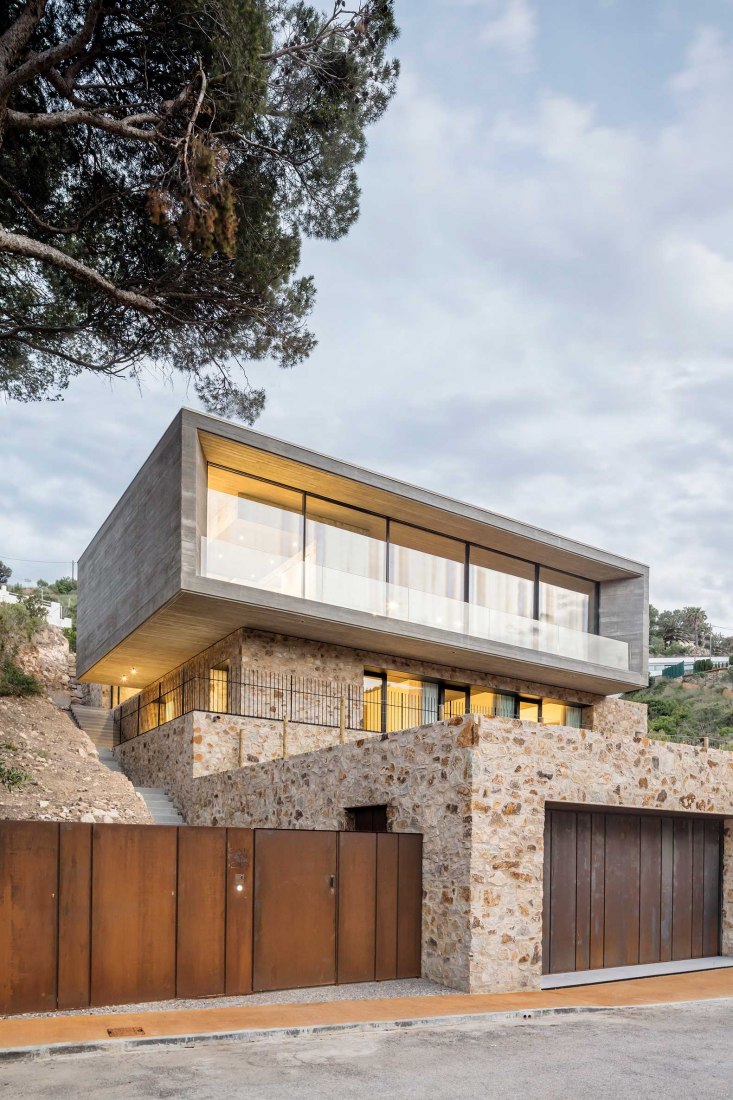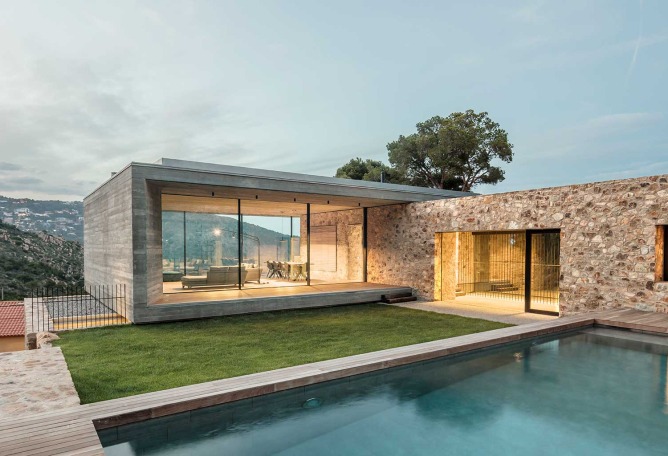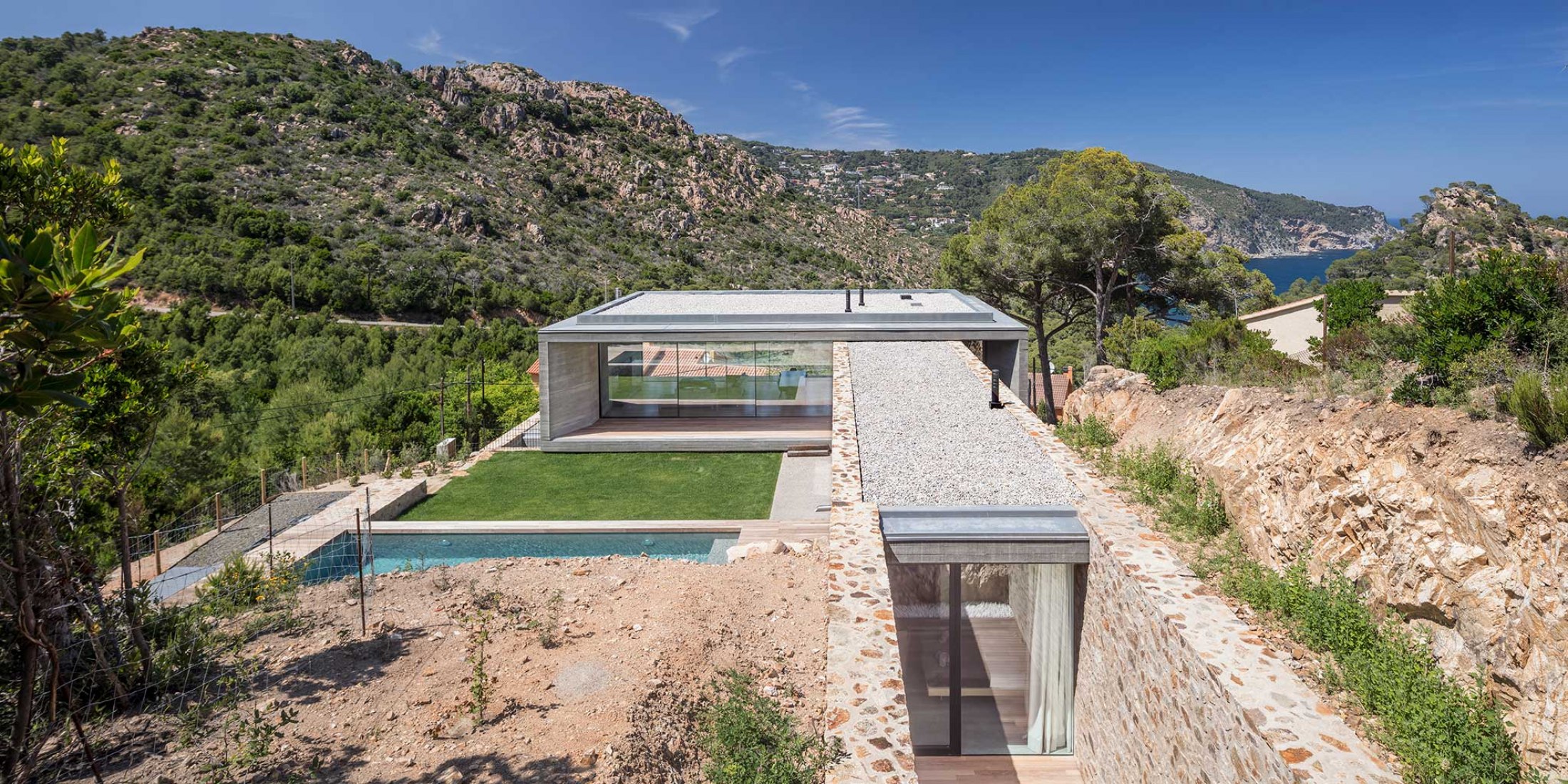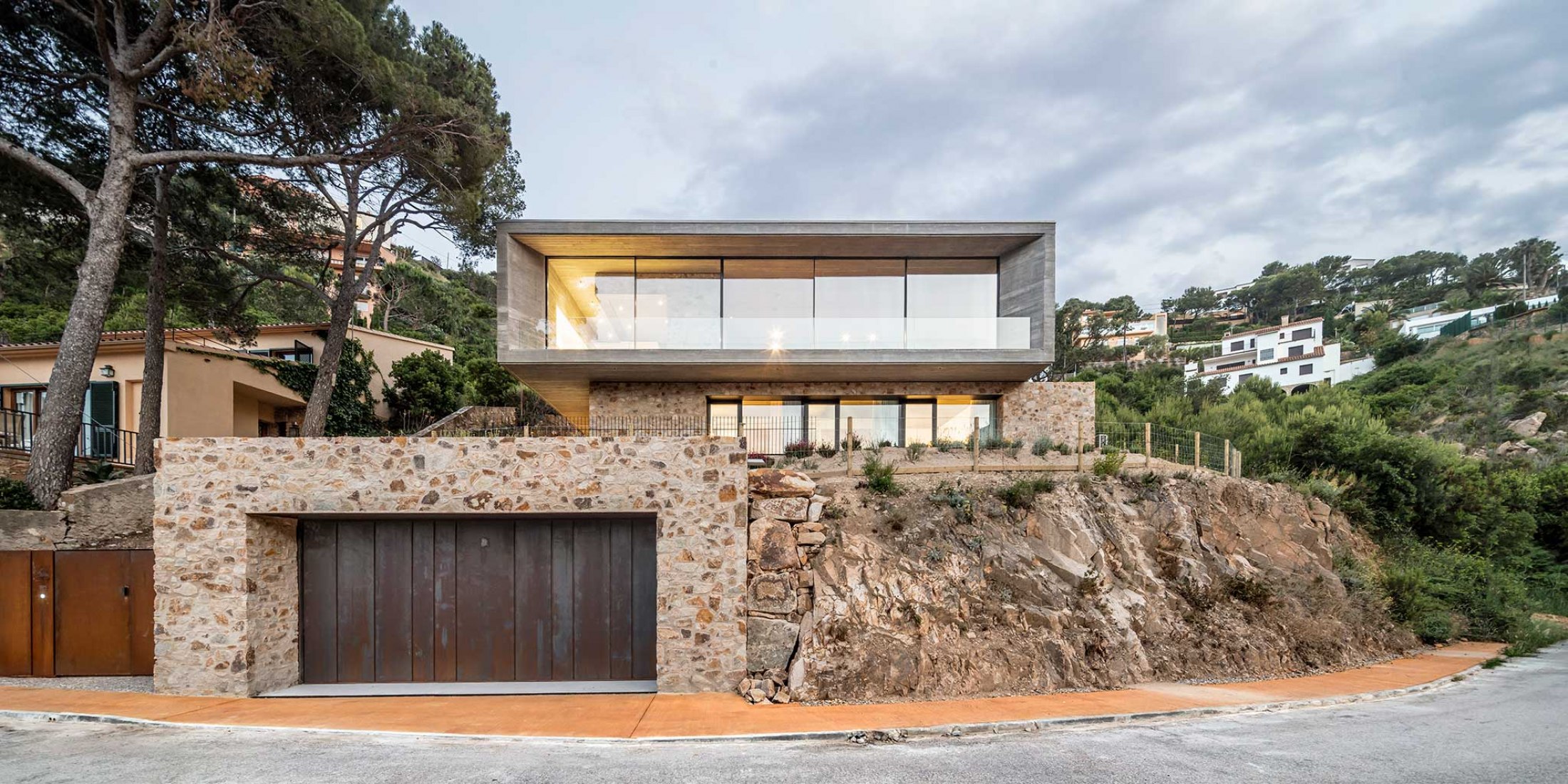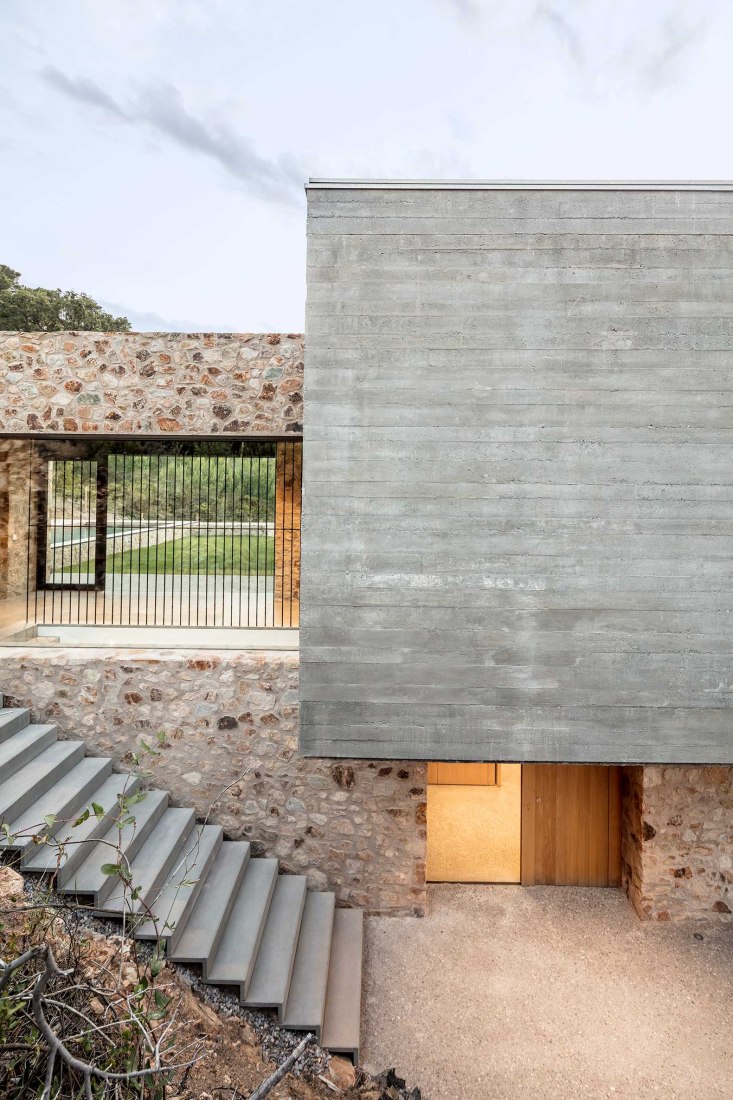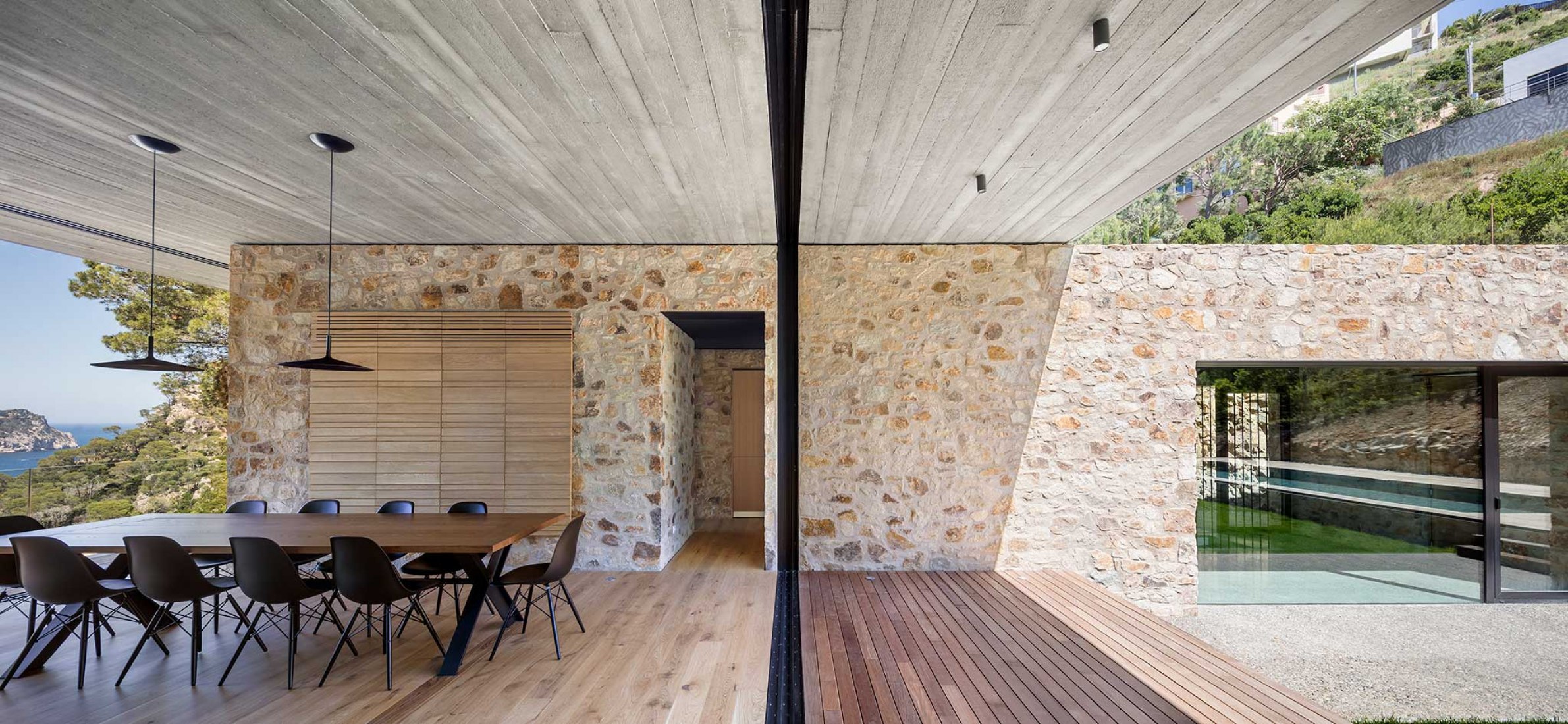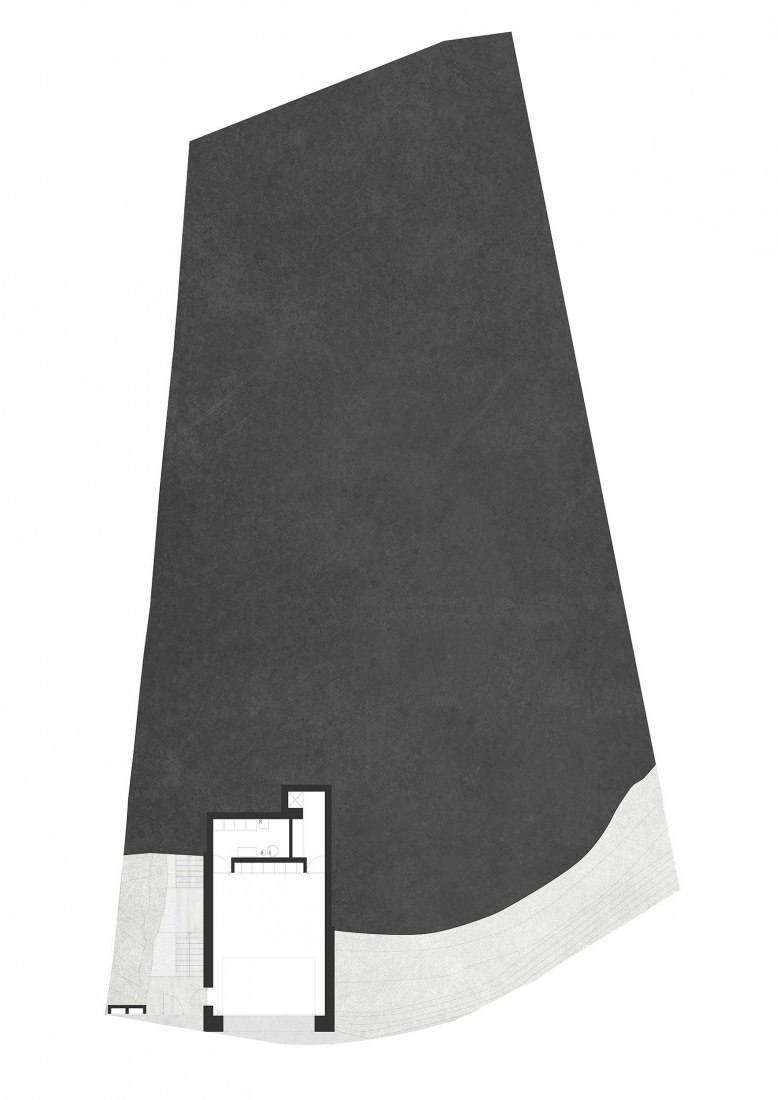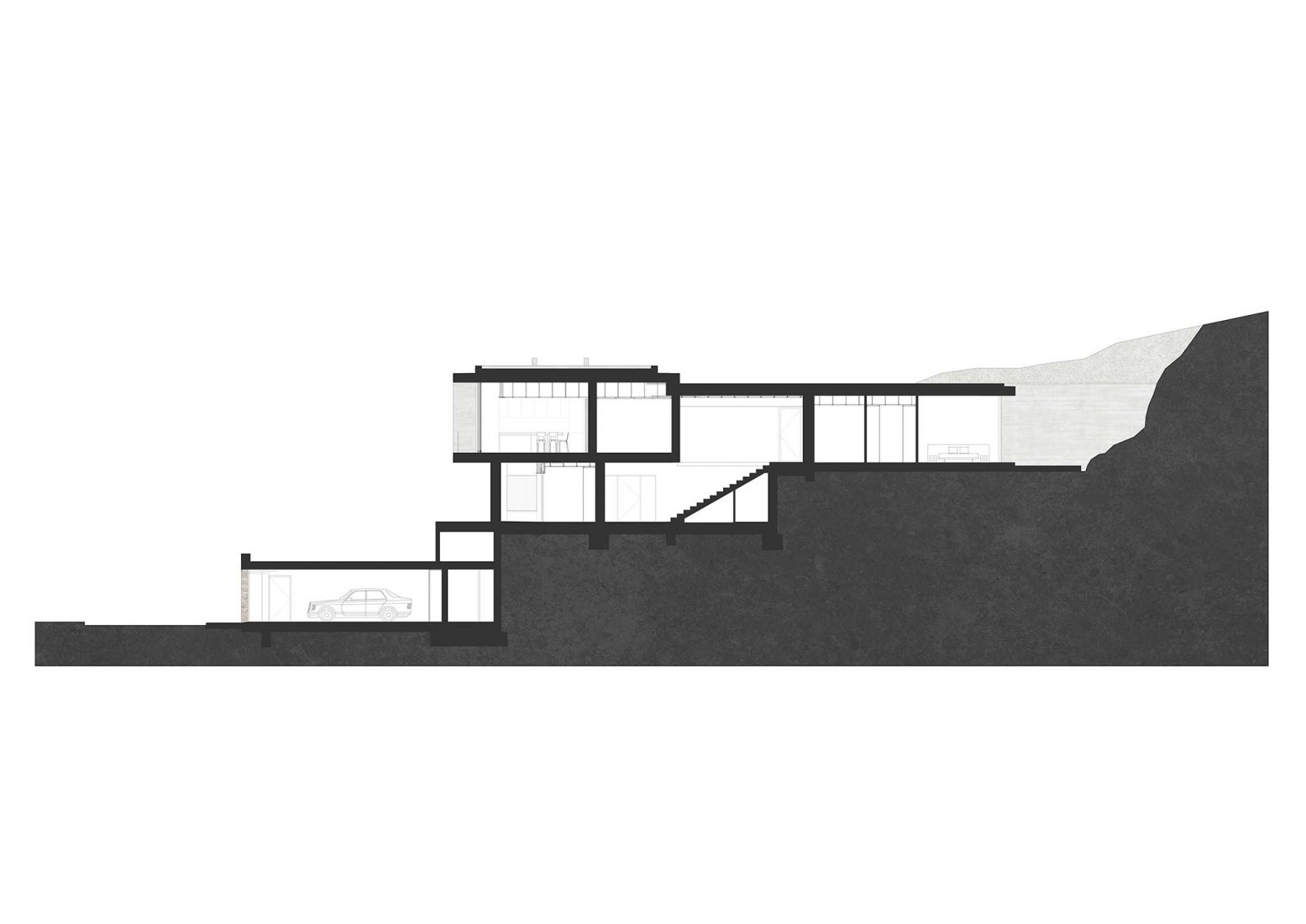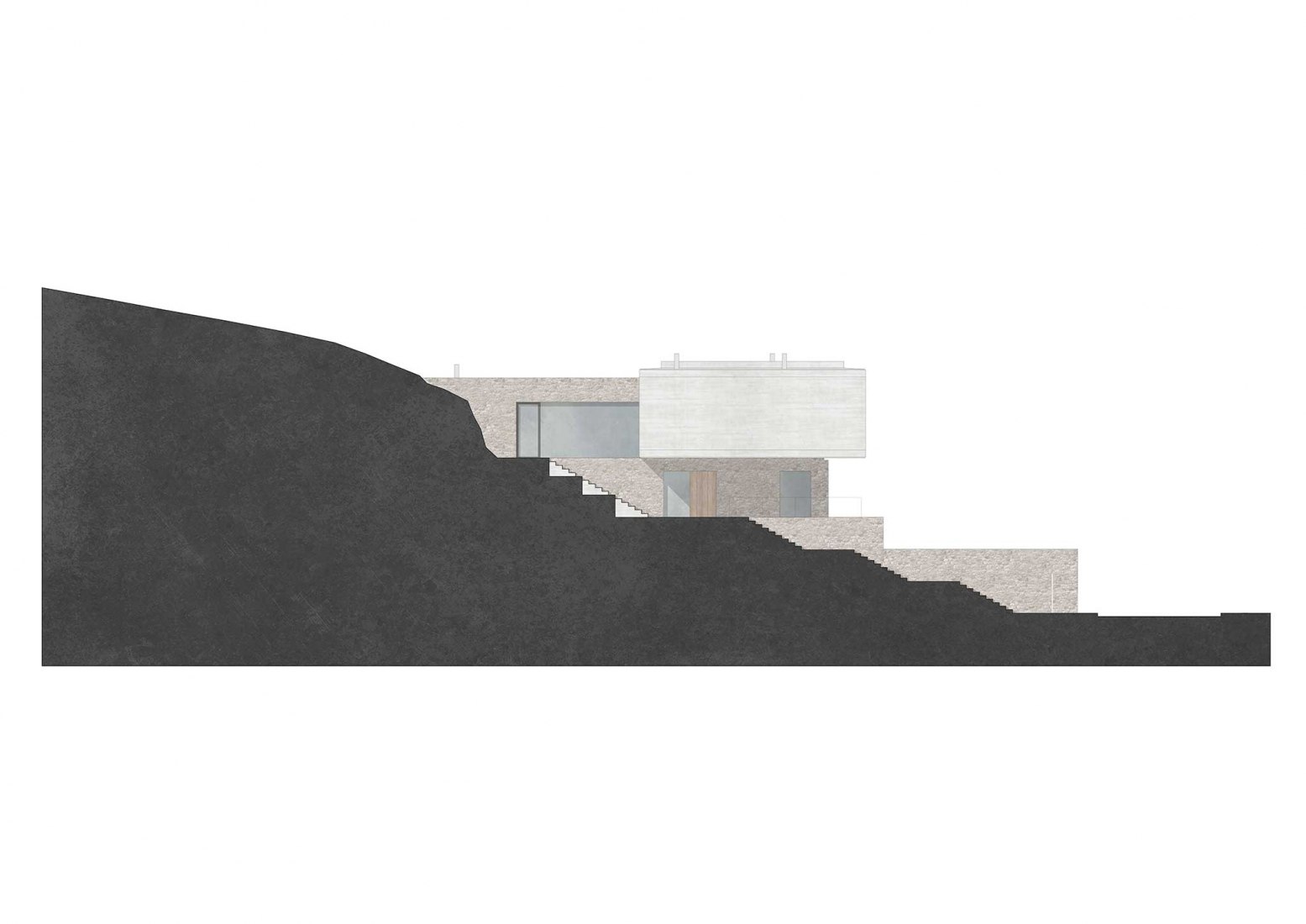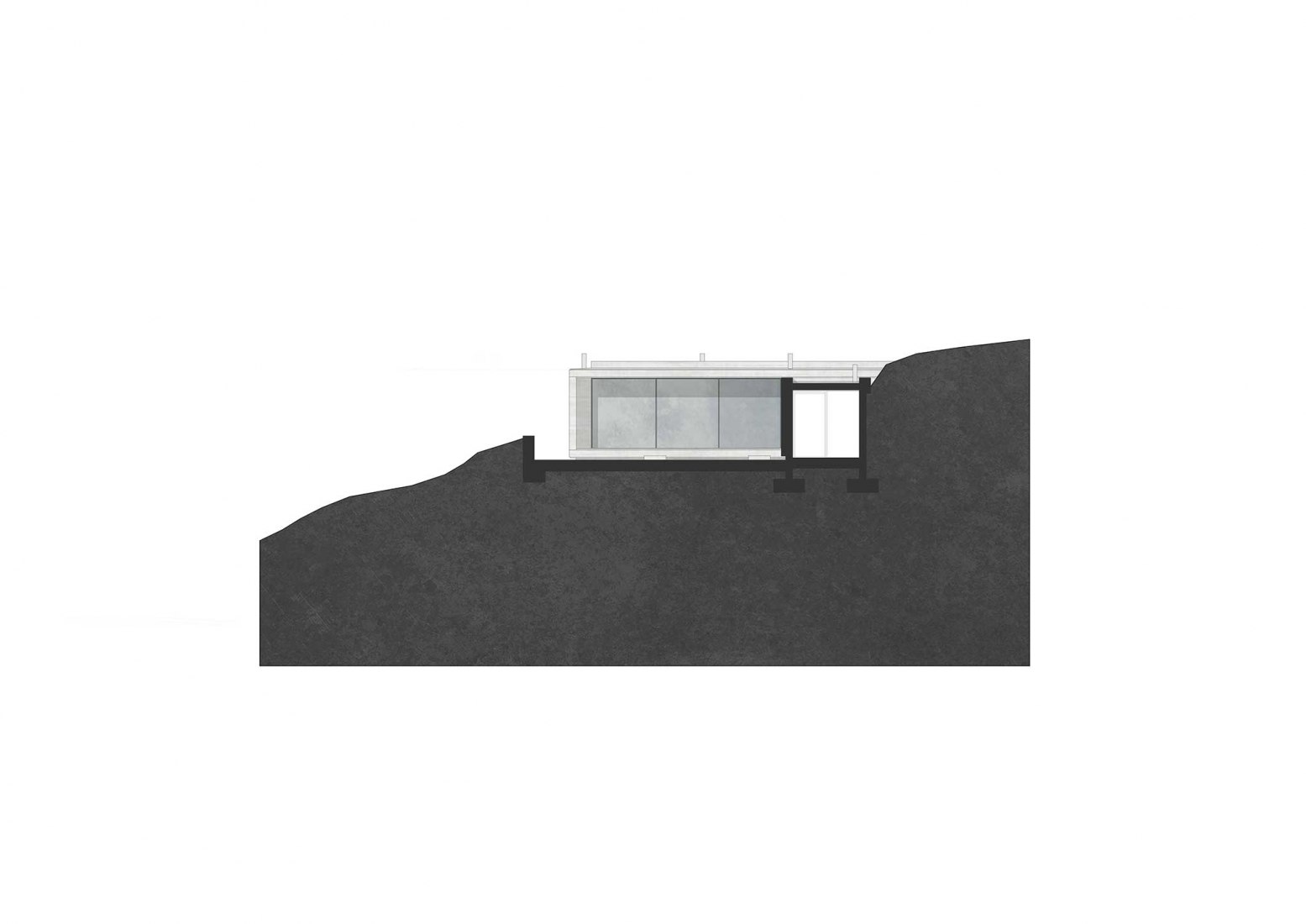The orientation of the house due to the location of the plot was north, so they saw the need for the design of a patio on the south side, to remain protected.
The housing program is divided into three levels, the first lowest is the entrance. On the second floor is the most private area, where the rooms are located and on the third floor, the common area. An unusual distribution but with the focus of being able to relate this last area with the landscape and the garden.
Project description by Nordest Arquitectura
The owners of the house come from across the Atlantic. For more than ten years they have spent part of their holidays on the Costa Brava, and about 8 years ago they bought their ideal plot. A place in the middle of the Begur mountains, with views of the mountains that surround Aiguablava. They asked us for a house that would allow them to live an experience closely linked to the relationship with the surrounding nature and landscape. It was also necessary to consider that the house would not only be on vacation, since in the future they wanted to change their lifestyle and make the house their new home.
In addition to achieve customer expectations, the project had to solve two more inputs that we instilled ourselves, one was integration with the environment, and the other was to face that the views of the landscape were oriented to the north. In this way we think of the house as a volume that would float on the mountain. A contemplation space from which to enjoy the views and the garden simultaneously.
The building is integrated into the environment reducing its presence to a volume of concrete, which corresponds to daytime spaces. The rest of the elements that complete the program of the house are materialized by means of the stone, thus they are perceived as stony volumes arising from the land and minimizes the impact of the building. The interaction between the volumes generates a closed patio protected from the wind, from which you can enjoy the surroundings through a succession of spaces that dilute the interior and exterior of the house, turning them into just one space. With this solution of opening the day area to the landscape and to the garden, the fact of achieving the south orientation to the main piece is also resolved. It was also possible to create a garden with a pool in which to enjoy the sun for as many hours as possible.
The route through the house begins through the access, this is done through an external staircase carved out of the rock. Then, the night area is accessed, corresponding to the base on which the main volume floats. Through an internal staircase we access the day area. This is divided into two parts, a volume that contains a room with a closed patio, and the main space of the house, a large porch that contains the living parts and allows their horizontal transparency.
The client's needs program was not complex, the requirement to fulfill was to be able to enjoy the environment and the relationship with the outside from all areas of the house.
The distribution was proposed with the night area on the lower level and the day area on the upper level, a priori it is not usual, but the fact of proposing this solution allowed the day area to be located with the best possible views, and at the same time open to a south-facing garden. Thus, the ground floor has the entrance hall, two double rooms with shared bathroom and the main suite, with dressing room and bathroom illuminated by an interior patio. This level is half buried and all rooms open onto the landscape. On the upper floor, we find a hall open to the garden that divides its program in two. Towards the mountain we find the courtesy bathroom and a study room open to a patio closed by two stone walls and the excavated rock. Towards the sea, we find the kitchen, the dining room and the living room, which fully open to the views and the garden. Specifically, we understand the living room space as an outside porch. Since practically all the windows can open-turning an interior space into an exterior one.
Other aspects of finishes: On the floor of the rooms, it has been chosen to use polished / reduced concrete so that the concrete aggregate is seen and forms part of the finish, in order to achieve a more tectonic appearance. Likewise, the slab has been left bare concrete, with wooden formwork, to achieve the same effect. Instead, in the partitions and walls, the white painted plasterboard finish was chosen to contrast with the concrete. And finally, to give warmth, the interior carpentry (doors and cabinets) and the bathroom furniture, we have opted for natural wood (oak) with a scraped finish. In this way, an austere, minimalist and warm ensemble is achieved at the same time.
The decoration has been reduced to the minimum expression, since it is the construction elements themselves displayed in a natural way that generate the environment. The combination of concrete, stone and wood creates spaces where you want to be, and the magnificent landscape of the environment has just completed them in such a way that you do not want to leave them.

